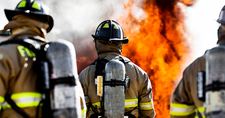A report from one of our ecom colleagues about a visit in a company:
I watched the safety video, filled out and signed a few forms, passed through security, donned the hard hat, safety suit & protective eyewear- ready to go! Then, with my company-appointed escort, I passed through double doors labeled “RESTRICTED”, and there I was: standing inside a Class 1 Division 1 (C1D1) application inside a very well-known company.
As I began to survey my surroundings, thinking about the types of C1D1 ecom devices that would be best-suited for the application, I immediately noticed a very alarming sight: several people within the application were using generic, non-certified smartphones! At that moment, it was pretty evident as to why I was asked for an appointment on site: They knew they were taking a risk, and they needed to change that ASAP!
My first question to the plant supervisor was, “How can these non-certified devices be allowed in this area of your facility, and why do personnel break clearly-posted rules regarding the entrainment and use of these devices in C1D1 restricted areas?” His answer: “You know how it is - there are ways around everything. At the end of the day, these guys just need to do their job, and they’re going to do whatever it takes to make that happen. Fact is- it’s faster and easier for them to use their personal smartphones instead of the approved company forms & processes, which are lengthy, time-consuming and outdated.” My follow up question: “Who in the company is ultimately responsible if something goes wrong as a result of the use of non-certified, non-approved devices?” His answer: “It starts at the top management and filters through everyone at the facility. Me, my boss, my boss’s boss, all the operators you see here; everyone has a stake in personal safety here. But…I’ve been demanding for changes for a long time now, and all we ever hear are what I think are excuses- no budget, we have to wait for other departments, etc. We haven’t had an accident here in over 3 years, except for the real minor stuff, and I’d like to think we do a pretty good job of keeping everyone safe, but we know we can be better. And that’s why you’re here today- we want to know what options we have.”
The supervisor was aware of the potential safety issues, seemed to be in tune with what needed to be done, but the whole time I was there, I was thinking, “These guys are in a race against time. They’re breaking company policy, they’re aware of the risks, but nothing has been done.” Sure, X% of the time- there won’t be any issue using non-certified devices, but what happens if/when something does go wrong?
Is everyone there willing to accept the worst that could happen?
If the answer is „No“ to that question, then action has to be taken as quickly as possible! Devices that are certified for safe use in C1D1/C1D2 areas are the only devices that should be allowed to used in those areas. Excuses and inaction are not going to solve the issue. From a “responsibility” standpoint - think about who & what is involved in the event of an accident. Personnel safety (first & foremost), company facilities, supplies & equipment; no one wants to be responsible when any of those are jeopardized. It’s just not worth the risk.
I’m happy to report that, since my visit, the company did in fact secure a large number of C1D1/C1D2 ecom devices, including smartphones and tablets, for their facilities. While the focus of this article is mainly on the safety aspect, there’s also a huge productivity & efficiency piece (as it relates to C1D1/C1D2 devices).
